
How To Prevent and Remove Rust on Your Car

Rust is one of the most insidious forces on the planet, and without proper care, it can turn a prized automobile into a worthless heap of metal with time. No matter how cheap or valuable, rust will come for every car finding weak and unprotected parts and panels and corroding them.
Once rust sets in, it can quickly spread and turn metal into Swiss cheese. However, with the proper care, it is not only possible to prevent rust from ever forming, but even to turn back the clock and remove years of rust from a vehicle. Here is how.
Why Are Cars Rusty?
Rust is the chemical product of iron and oxygen and the catalyzing agent water, which can be present in the form of a liquid or simply the humidity present in the air. The iron and the oxygen will react and form an iron oxide which is the brown crumbling material we know as rust.
This reaction can occur in moments when bare iron and steel are exposed to the surrounding atmosphere. The rate at which exposed metal will rust depends heavily on the particular alloy as well as the environment in which the car resides. However, all iron-based metals will begin to rust when left bare.
Image Credit: JerzyGorecki / Pixabay
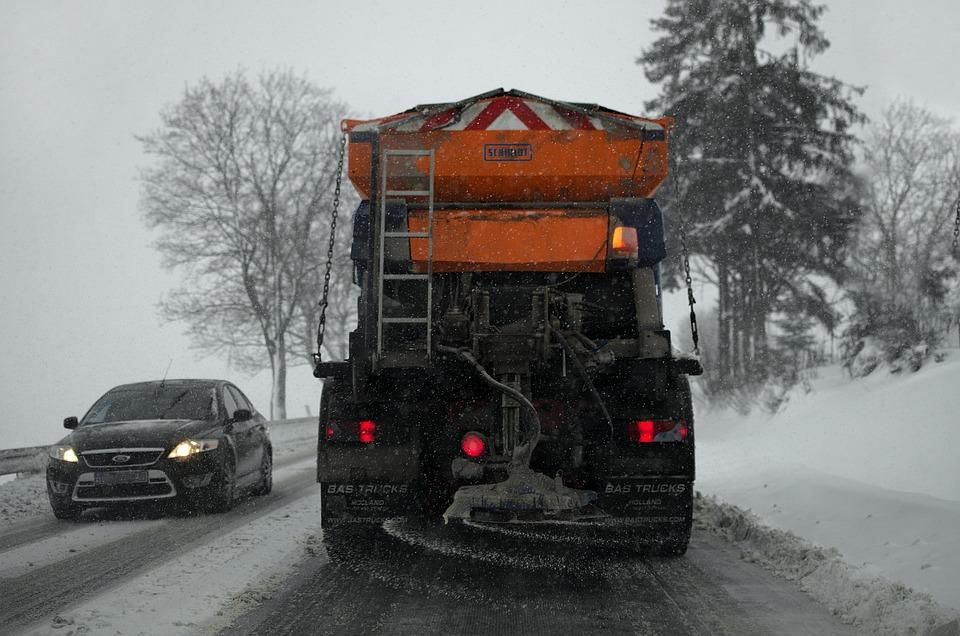
Acidic materials and road salt can strip paint and other protective coatings. Salt accelerates the rusting process by acting as an electrolyte. This is why iron rusts more quickly in salt water than in freshwater. It is also why northern climates where salt is used on roads during the winter, as well as oceanfront regions are particularly prone to rust.
At What Age Do Cars Start To Rust?
There is no predictable age at which a car begins to rust. The type of protective coatings, the type of steel, the surrounding climate, and the care put into protecting the vehicle all have a major impact on if and when rust will develop.
This means that there are simply too many factors going into when rust will develop to put a precise date on it. However, many older cars were manufactured without the same quality of rust preventatives, which means these vehicles are more likely to develop rust quickly when exposed to the elements.
But this does not mean that newer cars will not rust. Given time any car will rust if the conditions are right.
Why Is Rust Bad for Your Car?
The reason that rust is bad for your car is that it eats away the very metal that your car is made out of. When left untreated, this rust will gradually eat away at your car's body, frame, and other components.
In time, this can cause parts to fail and even destroy their structural integrity leaving them unsafe to drive. Even before this happens, it will weaken your vehicle's structure leaving it less able to resist damage from impacts and damage its appearance.
Image Credit: RyanMcGuire / Pixabay
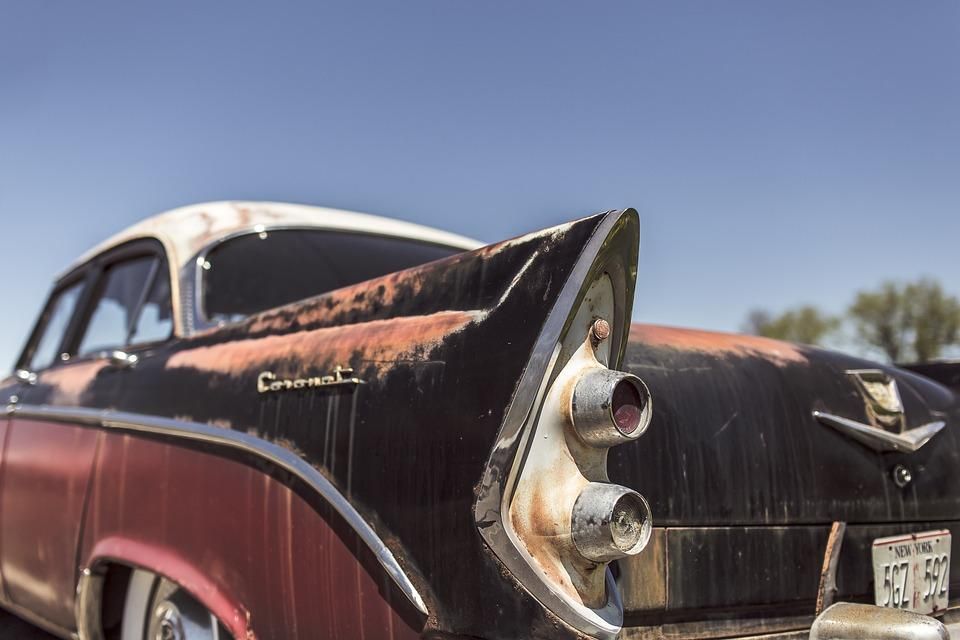
Types of Rust
Though all rust is composed of iron oxide, when discussing rust in terms of a car, it helps to divide it into three types based on how far the corrosion has progressed. These stages are surface rust, scale rust, and penetrating rust.
Surface Rust
Surface rust is how rust will first appear, and it is also the least serious problem. This rust is still limited to the surface of the metal and often appears in nicks and scratches of your car's paint. Generally, this rust is not a serious problem. However, with time it can become one if not treated.
Scale Rust
Scale rust is the next stage of damage which will occur when surface rust is left untreated. This stage is named for the rough, pitted surface it causes and is often visible through the paint on body panels due to the bubbles it creates.
This type of rust means that the corrosion is beginning to penetrate into the metal, eating it away. It is important to treat this rust quickly to prevent serious damage to the vehicle.
Penetrating Rust
Penetrating rust is the final stage of damage, at which point rust has penetrated through the metal, leaving nothing but rust and holes behind. This damage can leave your body panels and frames looking like Swiss cheese and can leave a car's structure dangerously weakened. At this point, it may be necessary to replace body panels and other components.
Image Credit: FotoKgw / Pixabay
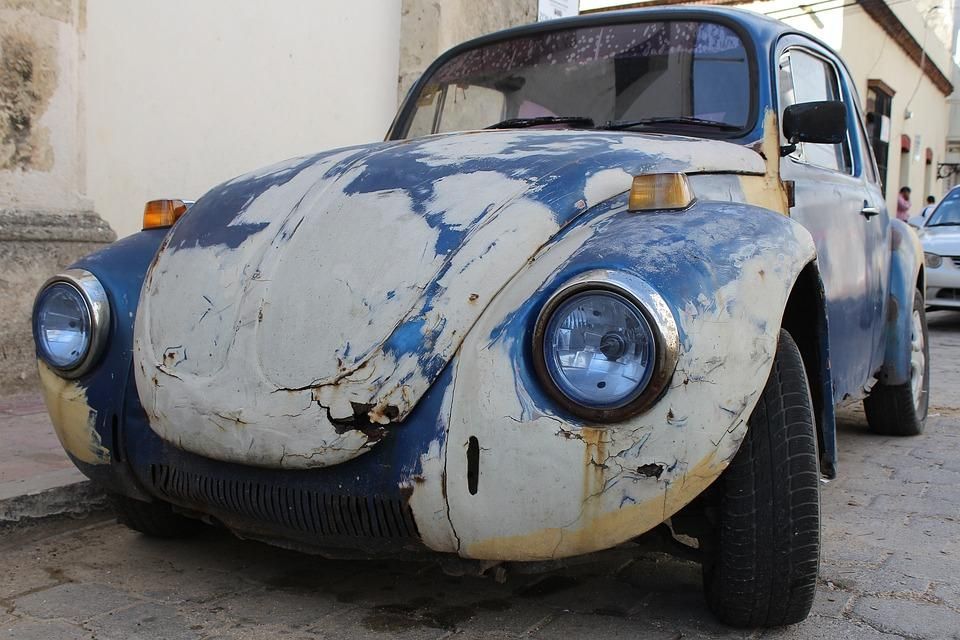
Common Rust Locations - How To Spot Rust on Your Car
When it comes to rust, it tends to spread from the bottom upward, so the best place to start looking is under your vehicle. Get out a flashlight and look for patches of rust or even holes in the floor panels on the underside of your car. Pay special attention to the rails on either side.
Next, look at the exhaust, particularly any place where it bends. Due to the frequent changes in heat and exposure to the elements, steel exhaust lines are at a high risk of developing rust.
Suspension components are also highly vulnerable and can catch a lot of moisture and road debris. So look over the control arms, suspension mounts, shocks, and struts, and for good measure, the strut towers underneath the hood.
Finally, move up to the fenders, rocker panels, and bottoms of the doors. These spots are often prone to catching water and road debris, causing rust. This is particularly true when these spots are left uncleared for a significant period. From here, just look over the entire surface of the vehicle for signs of bubbling under the paint or visible rust.
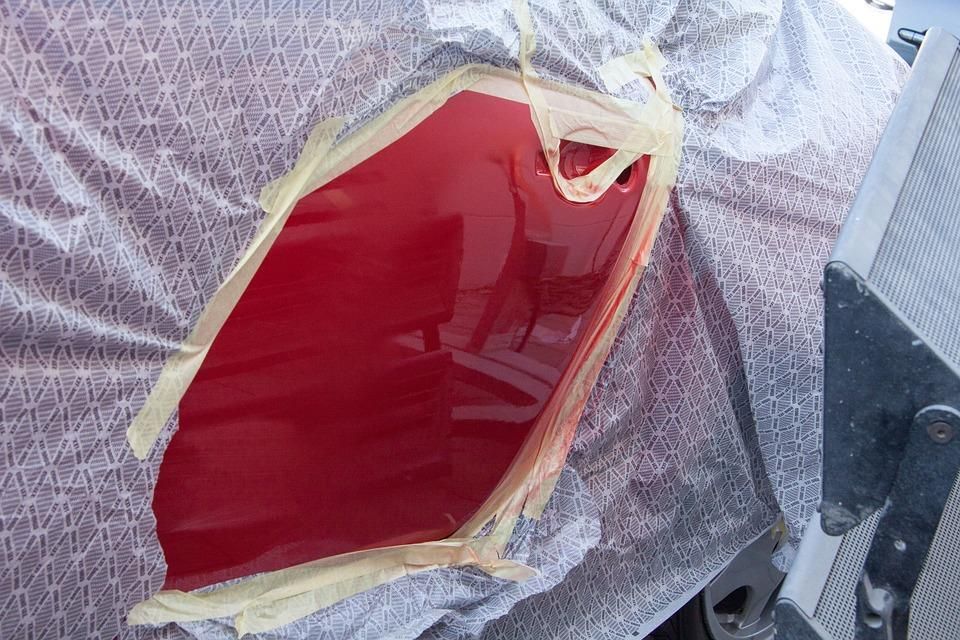
How To Fix Rust on a Car: Step-By-Step Instructions for Car Rust Repair
When rust is present on your car, it is important to act fast to repair it before it becomes worse. Fortunately, it is not that hard to do, just a bit time-consuming. You will need a few supplies to get the job done as well, including sandpaper, tack cloth, suitable paint, primer, clear coat, and poly sheet.
Step 1: Protect Non-Rusted Areas
You will be spraying paint around, so to prevent a mess, it is important to start by covering any parts of your car that are not being repaired in order to prevent overspray. You should also park your car in a safe location where the rust and paint can be safely sanded off, such as an interior garage floor where it can be swept or vacuumed up.
Step 2: Remove the Rust
Now that your vehicle is prepared, you can start removing the rust. Use sandpaper to remove both paint and rust around the affected area. Keep sanding until you reach bare metal, and remember to remove every bit of rust; otherwise, it can trap air and moisture, allowing the rust to continue spreading.
You can use sheets of sandpaper to complete the job or a sanding block. If you want to make the process easier, you can also use a power sander but be careful not to remove metal.
Step 3: Clean the Surface With Detergent
Now that the rust and paint are removed, it is important to clean them in order to remove dust and debris. Use a dish detergent and water and let it dry off. Then use a microfiber cloth to wipe it down and remove anything remaining.
Step 4: Prime the Surface
Now it is time to apply primer to prepare the steel to receive paint. Start out with several layers of epoxy primer overlapping the surrounding paint, following the directions on the can. Generally, two to three layers are good enough before following by sanding with a wet, fine grit sheet of sandpaper. Wash and let dry before wiping down with a microfiber cloth and two to three coats of a filler primer.
Step 5: Sand the Primer
Before applying your paint, it is necessary to sand out any drips, sags, and uneven portions with a rough grit sheet of sandpaper (320 grit will do). Follow with roughly 600 grit sandpaper, and then give a final sanding over the entire surface of the primer with 1,000 grit sandpaper to help the paint to adhere to the primer.
Step 6: Apply the Base Coat
With the primer dry, it's time to apply the base coat. Start at the bottom and move side to side, painting in rows. For the first coat, apply lightly and wait for it to dry. Then use a sheet of 400 grit sandpaper to smooth it down. Apply another layer of paint and repeat the sanding process two more times. After you apply the final coat, wet a sheet of 400-grit sandpaper and gently sand the final layer.
Step 7: Apply a Clear Coat
With everything cleaned, rust-free, and newly painted, it is now time to protect your work with a clear coat. This final coat of clear coat will protect your paint job from fading and abrasion as well as give yet another layer of protection for the metal underneath. Plus, this final layer of clear coat will give your car a glossy finish that will make it look brand new.
So, following the directions on the can, spray several coats of clear coat overlapping with the surrounding areas. Be careful not to spray too heavily in any coat. If you do accidentally create any running, wait for it to completely dry, sand it off with fine-grit sandpaper, and polish out any scratches with a polishing compound before spraying another coat.
Once done, use a microfiber cloth and polishing compound to buff all of your work. Now it is time to enjoy the product of all your work and appreciate how good your car looks.
Image Credit: sasint / Pixabay
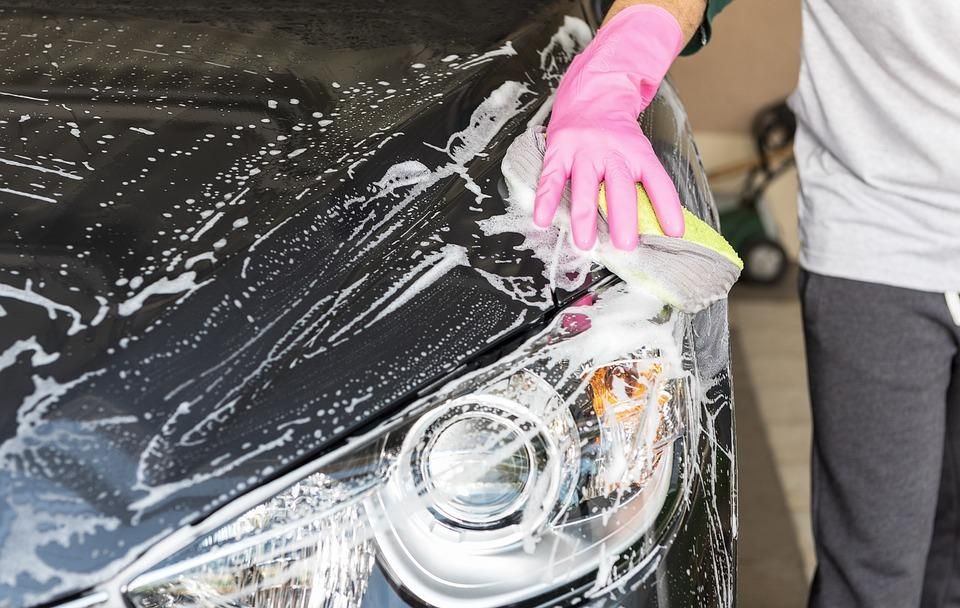
How To Stop Rust From Forming
Fortunately, most rust can be prevented in the first place by taking the right steps to protect your vehicle. There are several methods for preventing rust, and in most cases, it is best to apply several in order to prevent rust from forming.
Some things you can do to prevent rust include:
- Use a Car Cover: A high-quality waterproof cover will protect your vehicle from the elements whenever it is parked. This will help to keep it dry and prevent dirt, branches, and other debris from removing your car's protective coatings.
- Keep it Painted: A protective layer of paint creates a barrier that prevents oxygen and water from reaching your metal. This requires an oil-based paint that is properly applied to actually adhere to the metal, so don't think that it is quite as easy as grabbing any spray paint off the shelf and spraying it on your car. That said, a good layer of paint is one of the most effective ways to protect your car from rust.
- Wash and Wax: This may not create as powerful protection as other methods, but removing debris and applying a protective layer of wax is a great way to remove contaminants and extend the life of your paint job. This also creates another protective coating between your metal and the atmosphere while improving your car's appearance.
Should You Buy a Car With Signs of Rust?
If you discover rust on a car you are considering purchasing, it does not have to be a complete dealbreaker. It is important to consider the extent of the rust damage and where it has affected the car.
If the rust has only affected the surface or it is in an easy-to-fix location, such as a door, then it may be worth overlooking. You may even be able to ask for a discount based on the cost of repairing the rust damage.
However, you may not be comfortable purchasing a car with any serious signs of rust or dealing with repairs. It is possible that the rust could indicate previous damage or even a minor wreck, and you may not want to deal with this. If this is the case, you may want to move on to consider another vehicle if you discover any rust.
Featured Image Credit: @ robdragan via Deposit Photos # 263156742
Updated